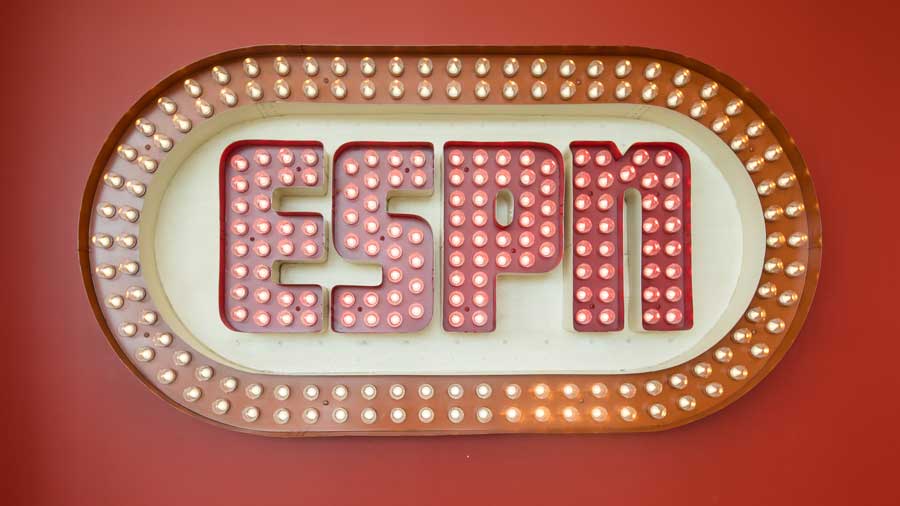ESPN Touts Effectiveness of Spots Viewed Out-of-Home

ESPN, which is getting its out-of-home viewership included in many of its advertising deals, is pointing to new research that shows commercials viewed in bars, health clubs and other venues are as effective as those seen in living rooms.
When Nielsen includes out-of-home viewing in its ratings, ESPN gets the biggest lift, a total-day 8.5% gain in people two years old and up. Monetizing those extra viewers became a priority a couple of years ago.
The latest data shows that those extra viewers are valuable to ESPN and its sponsors.

“Out-of-home conjures up images of people with their backs turned in bars, but that’s not really what it is,” said Cary Meyers, senior VP, fan and media intelligence at ESPN. "People are intensely engaged when they’re watching sports and absorb the ads too.
"There’s just constant awareness of one’s surroundings," Meyers added. "Even if peripherally they’re being exposed, people just process them."
Looking at the data by location shows little variability in the effectiveness of out-of-home ads, he said.
“It’s not surprising," Meyers said. "It’s great to see substantiation now."
Broadcasting & Cable Newsletter
The smarter way to stay on top of broadcasting and cable industry. Sign up below
In fact, ads in some out-of-home locations are even more effective than those seen by couch potatoes sitting on their sofas. Those locations include gyms and public transportation -- people in transit on buses and trains watching on mobile devices.
The research was part of long-running surveys by Nielsen Brand Effect, now Phoenix Brand Effect, that tracked ad memorability, brand recall and message recall. Questions about where the viewer was when the ad was seen were added recently to the studies.
The research found that out-of-home viewers were 91% as likely to recall the content of an ad 24 hours after natural exposure as in-home viewers.
Of those that recalled the content, out–of-home viewers were 97% as likely to recall the brand.
Of those that could recall the content and the brand, out-of-home viewers were 96% as likely to recall the message.
Meyers noted that media buyers are very familiar with the Brand Effect research, and that by and large they seem to be buying it.
"There’s head nodding," Meyers said. "I think there’s an understanding that sports is just so unique.
“It’s a real phenomenon for us," he added. "Most advertisers are consumers of sports in out-of-home locations. At some point, they certainly are aware that when they’re there, there’s still recognition of and attention to ads in a way that’s consistent with what you see among in-home views.”
Now both the viewership is measureable and the effectiveness of the ads is quantified.
“We’re going to continue touting this story,” Meyers said. “We think we’re doing a good job knocking down perceptual walls. There’s been intuition that this might be the case, but now we’ve got empirical data to substantiate that. These are not an insignificant number of viewers. And this is reinforcing a story that’s already been heavily sold in in the last couple of year by the ESPN folks.”
Jon has been business editor of Broadcasting+Cable since 2010. He focuses on revenue-generating activities, including advertising and distribution, as well as executive intrigue and merger and acquisition activity. Just about any story is fair game, if a dollar sign can make its way into the article. Before B+C, Jon covered the industry for TVWeek, Cable World, Electronic Media, Advertising Age and The New York Post. A native New Yorker, Jon is hiding in plain sight in the suburbs of Chicago.

